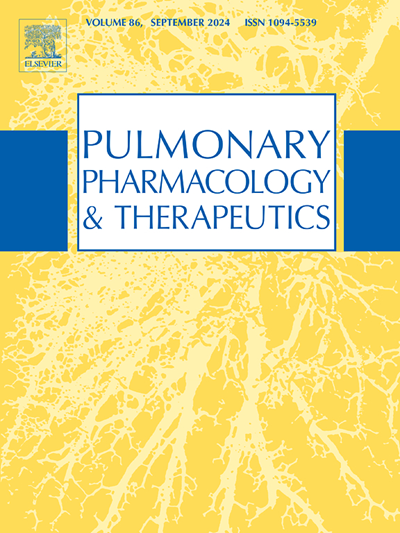Inhaled epoprostenol for management of acute respiratory failure and pulmonary vascular disease
IF 2.8
3区 医学
Q2 PHARMACOLOGY & PHARMACY
引用次数: 0
Abstract
Inhaled epoprostenol has remained an attractive and viable option for the delivery of prostacyclin to offset abnormalities in ventilation and perfusion mismatch while minimizing the typical adverse effects associated with systemic administration. There is a need to better understand pharmacologic properties of inhaled epoprostenol and its application to diseases affecting the cardiopulmonary system. The goal of this review is to provide an overview of inhaled epoprostenol and outline its use specifically in the medical management of acute hypoxemic respiratory failure and pulmonary vascular disease. Among patients with acute respiratory distress syndrome who ultimately required invasive ventilation, inhaled epoprostenol has not improved ventilator-free days, intensive care unit length of stay, or mortality. However, it may be beneficial in certain select patient populations. In the management of pulmonary hypertension, inhaled epoprostenol has allowed for continued maintenance of chronic pulmonary arterial hypertension-specific therapy and for possibly improving right ventricular function as an attractive option in the critical care management of pulmonary hypertension.
吸入环氧前列醇治疗急性呼吸衰竭和肺血管疾病
吸入环氧丙烯醇仍然是一种有吸引力和可行的选择,用于输送前列环素,以抵消通气和灌注不匹配的异常,同时最大限度地减少与全身给药相关的典型不良反应。有必要进一步了解吸入型环氧前列醇的药理学特性及其在心肺系统疾病中的应用。本综述的目的是提供吸入性丙烯醇的概述,并概述其在急性低氧性呼吸衰竭和肺血管疾病的医疗管理中的应用。在最终需要有创通气的急性呼吸窘迫综合征患者中,吸入丙烯醇并没有改善无呼吸机天数、重症监护病房住院时间或死亡率。然而,它可能对某些特定的患者群体有益。在肺动脉高压的治疗中,吸入epoprostenol允许持续维持慢性肺动脉高压特异性治疗,并可能改善右心室功能,作为肺动脉高压危重监护管理的一个有吸引力的选择。
本文章由计算机程序翻译,如有差异,请以英文原文为准。
求助全文
约1分钟内获得全文
求助全文
来源期刊
CiteScore
6.20
自引率
0.00%
发文量
41
审稿时长
42 days
期刊介绍:
Pulmonary Pharmacology and Therapeutics (formerly Pulmonary Pharmacology) is concerned with lung pharmacology from molecular to clinical aspects. The subject matter encompasses the major diseases of the lung including asthma, cystic fibrosis, pulmonary circulation, ARDS, carcinoma, bronchitis, emphysema and drug delivery. Laboratory and clinical research on man and animals will be considered including studies related to chemotherapy of cancer, tuberculosis and infection. In addition to original research papers the journal will include review articles and book reviews.
Research Areas Include:
• All major diseases of the lung
• Physiology
• Pathology
• Drug delivery
• Metabolism
• Pulmonary Toxicology.

 求助内容:
求助内容: 应助结果提醒方式:
应助结果提醒方式:


